What Is Dermaplaning—and Does It Work?
A beauty editor's quest for smooth and glowing skin.
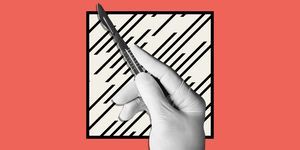
I have the type of coloring my mother calls “striking:” dark, Italian hair against pale, Polish skin. And it’s true; the combination is striking—on my upper lip area. And my sideburns. And my chin. Yes, I’m talking about my very visible facial hair. Though plenty of women proudly rock their facial hair (and I bow down to you), I personally feel more comfortable with hair-free skin. The only problem? My pale, Polish skin is also extremely sensitive. Like, break-out-in-a-rash-at-any-moment sensitive, which means that bleaching, waxing, and lasering aren’t options for me and my ‘stache.
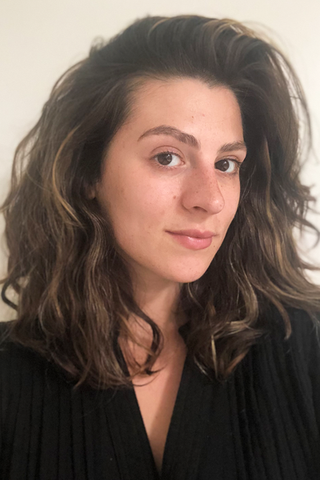
'Me, right before my dermaplaning treatment.'
So when I heard about dermaplaning—a treatment that uses a scalpel-like blade to gently “shave” peach fuzz and dead skin cells off your face for smoother, glowier skin—I was intrigued. “It’s essentially just manual exfoliation with a blade,” says Nousha Salimi, R.N., an LA-based aesthetician at Rejuvenate with Nousha.
It seemed too good to be true: Not only could dermaplaning remove my dark hair in a way that's supposedly safe for even my sensitive skin, it would also clear away grime and dead skin cells, helping my skincare products absorb better and increasing their efficacy. Thus, in the name of research (and the hope of hair-free skin) I went ahead and tested it out. And my results were, well, not exactly what I expected.
The Risks of Dermaplaning
When I booked a dermaplaning session with Haley Wood, my go-to aesthetician in Los Angeles, she noted that dermaplaning can be irritating for some skin types, especially those with oily skin, since the blade can get “snagged” on excess oil. Considering the fact that this treatment literally involves scraping off a layer of skin with a scalpel, I’d be shocked if it weren’t at least somewhat irritating, but, surprisingly, every derm and aesthetician I spoke with classified dermaplaning as a very low-risk, low-irritation procedure.
A post shared by Heritage Way Medical Spa (@hw.medspa)
A photo posted by on
“The main risk you could potentially experience is getting too aggressive of a treatment for your skin type,” says Amy Taub, M.D., dermatologist of Advanced Dermatology. “If your skin is too sensitive or ‘compromised’ before treatment—like if you have rosacea, psoriasis, or eczema—dermaplaning could cause excess skin peeling or leave you with light abrasions.” Plus, you know, there’s always a slight risk of getting nicked with the blade.
Still, an experienced professional (e.g. a board-certified dermatologist or incredibly well-reviewed aesthetician) should be able to mitigate these risks by assessing your skin type before treatment. To be extra safe, avoid any exfoliating treatments (like scrubs, retinoids, or acids) for a week before and after dermaplaning.
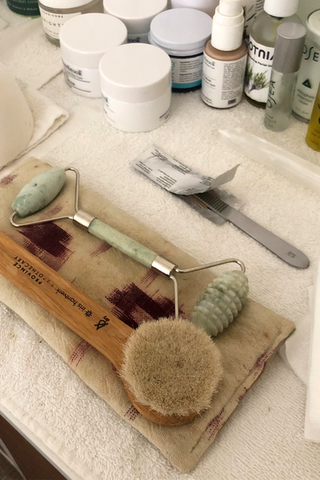
What the Actual Dermaplaning Treatment Was Like
Since my skin is acne-prone, very sensitive, and often clogged with oil, I probably should’ve thought twice about booking a session. Instead, I threw caution to the wind in pursuit of perfect skin. Wood (my aesthetician) first prepped my skin by cleansing, steaming, and doing some light extractions to “remove the tiny pockets of oil” in my pores help the blade glide more smoothly over my skin.
Stay In The Know
Get exclusive access to fashion and beauty trends, hot-off-the-press celebrity news, and more.
Next, she swabbed my face with alcohol—a nightmare for anyone with sensitive or reactive skin. But, unfortunately, this was a non-negotiable part of my treatment. Dermaplaning protocol varies based on the provider and their training, so while Wood’s certification calls for alcohol to remove “any residual oil that would dull the blade,” Dr. Taub says her practice preps the face with a skin type–appropriate cleanser and a Clarisonic brush. If you’re worried, make sure to call and ask about skin prep before booking an appointment.
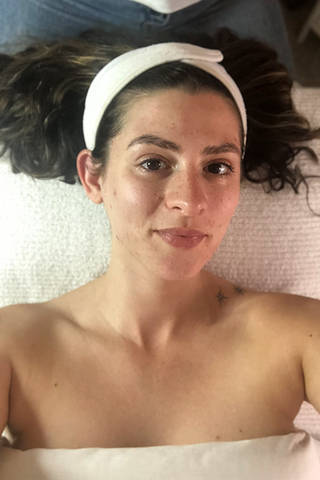
'During the treatment; not too irritated—yet.'
Does Dermaplaning Hurt?
The alcohol swab was actually the most painful part of the whole process—and it only stung for about 10 seconds. Surprisingly, the dermaplaning didn't hurt at all. In fact, it felt freaking incredible. No, really.
Wood worked across my face in quadrants, pulling my skin taut before gliding the round-tip blade (also known as a “butter blade” for its resemblance to a butter knife) across my skin with feather-light strokes. I had no idea the process would be so gentle—the meditative, sweeping motion of the blade was like tactile ASMR. I relaxed instantly. If this is how dudes in old-school barbershops feel when they get a shave, women have seriously been missing out.
It took Wood a mere 20 minutes to fully dermaplane my face (she avoided dermaplaning over my cystic acne, which would further aggravate my breakouts), then she finished off the procedure with a layer of moisturizer to mitigate irritation and dryness, especially post-alcohol swab. Without my peach fuzz, my skin felt oddly naked—everything from the wind blowing across my face to my husband kissing my cheek was a new experience. I could even feel the active ingredients in my serum tingling as they sunk into my skin that night.
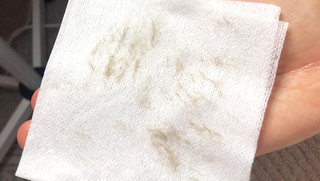
'All the peach fuzz and dead skin cells Wood shaved from my face.'
The Results
I imagined I’d be glowing afterwards; the picture of hairless perfection. But my results were quite the opposite. My characteristically reactive skin was especially red and inflamed, even though dermaplaning doesn't usually cause irritation on most skin types. But, seeing as my face is incredibly sensitive to begin with, I wasn't surprised.
Typically, with dermaplaning, "skin should be mildly red from the stimulation, which should calm down within an hour or two," says Dr. Taub. Mine took days to calm down. Wood says that my reaction was likely the result of the added extractions and the post-treatment facial massage I opted for. Whatever the reason, my results were definitely atypical, considering dermaplaning is meant to leave skin smooth and glowing within an hour or two of treatment.
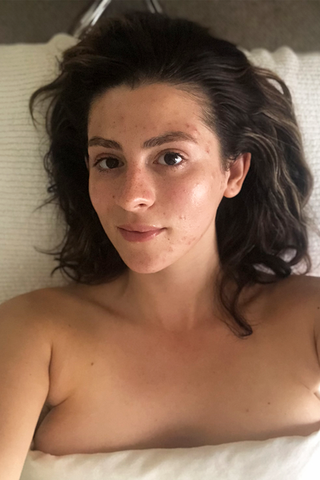
'Right after the treatment when my skin was definitely irritated.'
If you do experience irritation, though, it’s not a huge deal—just layer on 1 percent hydrocortisone cream each night for a few days until your skin calms down, and make sure to discontinue any retinoids, acne treatments, acids, or anything that can cause exfoliation for a full week, says Dr. Taub. For me, my inflammation began to subside five days post-treatment, just as the tiniest prickle of stubble started growing back on my upper lip. Lucky me.
Would I Do It Again?
Though I missed my window to experience the baby-soft, hair-free skin of my dreams, this isn’t the last time I’ll try dermaplaning. Since hair starts to grow back rather quickly, it requires monthly (or, quarterly, if you don’t have “striking” features like I do) maintenance appointments, so I’m definitely going to give it one more shot. Next time, though, I think I’ll skip the extractions and the face massage, since, let's be honest, all I really wanted was the hair removal anyway. If you're looking to try dermaplaning at home, shop our favorite tools below.
For more stories like this, including celebrity news, beauty and fashion advice, savvy political commentary, and fascinating features, sign up for the Marie Claire newsletter.
RELATED STORIES


-
 Prince Andrew Keeps "Allowing Himself to Be Humiliated" Amid Royal Lodge Dispute With King Charles
Prince Andrew Keeps "Allowing Himself to Be Humiliated" Amid Royal Lodge Dispute With King Charles"It is how it looks: an idle and disgraced Duke swanning around on his horse."
By Amy Mackelden Published
-
 Oprah’s Favorite Designer Sneakers Are on Major Sale
Oprah’s Favorite Designer Sneakers Are on Major SalePlus, 29 other styles you can shop before Black Friday.
By Julia Marzovilla Published
-
 Eva Longoria Shimmers Like a Trophy in Golden Ralph Lauren
Eva Longoria Shimmers Like a Trophy in Golden Ralph LaurenShe won her latest red carpet.
By Halie LeSavage Published
-
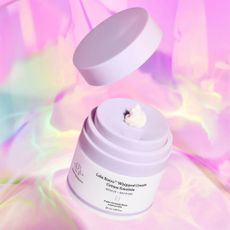 Drunk Elephant Recalls Three Best-Selling Skincare Products Following an Ingredient Mix-Up
Drunk Elephant Recalls Three Best-Selling Skincare Products Following an Ingredient Mix-UpHere's how to know if yours were compromised.
By Hanna Lustig Published
-
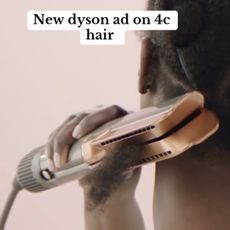 Why Dyson's New Airstrait Ad Ignited a TikTok Controversy
Why Dyson's New Airstrait Ad Ignited a TikTok Controversy"They said y'all can buy the product but it is not meant for you."
By Hanna Lustig Published
-
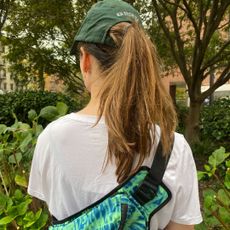 As A First-Time Marathon Runner, These Wellness Essentials Helped Enhance My Training and Recovery
As A First-Time Marathon Runner, These Wellness Essentials Helped Enhance My Training and RecoveryFrom a hardworking deodorant to a soothing sauna blanket.
By Halie LeSavage Published
-
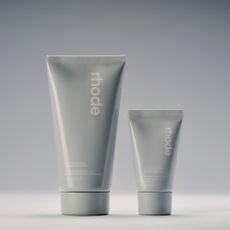 Hailey Bieber’s New Rhode Barrier Butter Is So Decadent, You’ll Want to Smear It Everywhere
Hailey Bieber’s New Rhode Barrier Butter Is So Decadent, You’ll Want to Smear It EverywhereIntroducing the brand's yummiest product yet: Barrier Butter.
By Hanna Lustig Last updated
-
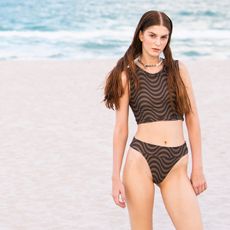 What Is Sugar Waxing? Everything to Know, According to Experts
What Is Sugar Waxing? Everything to Know, According to ExpertsIt's also less painful than some alternatives.
By Iman Balagam Published
-
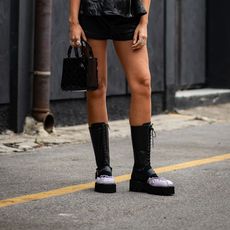 Is Cyperus Rotundus Oil Really a Natural Alternative to Laser Hair Removal?
Is Cyperus Rotundus Oil Really a Natural Alternative to Laser Hair Removal?According to research, it just might.
By Samantha Holender Published
-
 At Ställe Studios, a Facialist With the “Hands of God” and the Attitude of an Angel
At Ställe Studios, a Facialist With the “Hands of God” and the Attitude of an AngelElizabeth Grace Hand values in-depth treatments and in-depth conversations.
By Halie LeSavage Last updated
-
 13 Best Drugstore Concealers That Feel Surprisingly Luxurious
13 Best Drugstore Concealers That Feel Surprisingly LuxuriousGreat things *do* come with small price tags.
By Iman Balagam Published